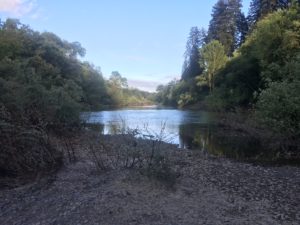In a few minutes, Melanie, Zoe, and I will get on our bikes and ride from Cannery Row to Monterey’s downtown to join the “First Night” New Years Eve festivities.
It’s an annual tradition for us, in the way traditions should be—involving, each time, an evaluation of other options, and due consideration of possible variations, followed by a decision to do the same again, and pretty much the same way we did it last year, because we like it that way and we don’t see any good reason to change. Traditions should be nothing more, or less. We’ll decide about next year, next year.
In the big picture, for everybody and the world, 2018 was goddamned awful. I’m happy to kick it to the curb. The thing to celebrate is this: In all that goddamned awfulness, it became more apparent that the awfulness is more of the same again, as it has been in previous years, and maybe what’s changed is us, and our willingness to continue in the same vein. There is nothing really new in the planet being destroyed, or placing toxic sexual deviants in high office, or Mississippi being an affront to civilization, or that most Americans are cowards and choose to believe outright lies. These phenomena are all so constant and repetitious in my lifetime that they are like traditions. But I have a feeling we all, collectively, might not decide to do it the same way next year. We can hope, and be optimistic.
In 2018, I tallied some bits and pieces along this stretch of my journey to the grave.
- I biked on 108 occasions, traveling 3,695 miles and climbing 235,109 feet. I expect to do the same or more in 2019.
- I began a daily meditation practice on April 30, and meditated on 263 of the following days, most times a 20-minute silent sitting meditation, totaling a little more than 87 hours. I expect to meditate more than 350 days in 2019. More than the hours, though, is the purpose of this practice. In her excellent book, How to Meditate, Pema Chodron describes nurturing five qualities through practice; I have condensed them, for the purpose of recall, as follows: loyalty to self, clarity, courage, presence, humility.
- I billed a little over 1,000 hours of working time. In a reversal of my earlier plans for semi-retirement, I anticipate working a bit more in 2019. There are some things that I want to spend money on, and I don’t think it’s wise to dip into my retirement savings for them. And I continue to see a lot of demand for my services, and who am I to argue with that?
There are some things I’ve meant to do, or wanted to do, for some time, and I guess this is the time to restate those intentions:
- First, there’s my yoga practice, which is essential if I’m going to keep up the biking. Back in September, I had to cut way back on riding for time until I could get my muscles stretched out again. Also, I’m getting, you know, old, and I’d better make this a regular habit. Besides, I like it. So I’ll make the resolution to start a regular once-a-week yoga class, plus a half-hour before meditating at least twice a week, plus continuing my 10-15 minutes yoga prelude to meditation most other days.
- I plink on the guitar occasionally, but I didn’t get any better, and may have lost some ground, during 2018. I won’t commit to lessons, quite yet, but I’ll aim for a 30-minute practice session twice a week—mostly for the therapeutic benefit.
- And then there’s the business of getting my affairs in order. I use that phrase as a way of getting at the mystery of why I haven’t straightened that shelf in my bookcase, or cleaned out that closet, or caught up with my accounting, or completed my estate planning, which I feel are really the same mystery. Moreover, that same mystery encompasses, in some essence, why I haven’t expended the effort to make this or that thing—my wardrobe, or various aspects of my personal space and effects—more to my liking. So my goal for that is not so much about completing any of these things in the sense of putting them behind me, but more to understand better my relationship to them, and to my motivations for doing them or, as has been the case, not doing them.
Last—perhaps it should be first—there is my personal big picture of striving to live my values. I wear a bracelet that says, “Express Yourself,” by which I mean to bring myself to the job of living, and especially, or parenting, and to help and inspire others, and particularly my daughter, to do the same. Meditation, and some other forms of self-discipline, helped me to significantly advance that effort during 2018, and I mean to realize the benefits of that, and make further advances, in the coming year.
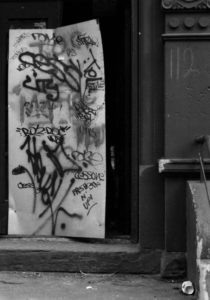
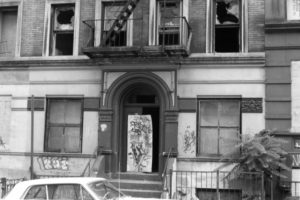
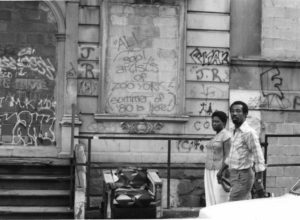
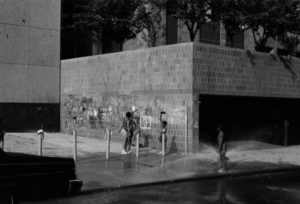
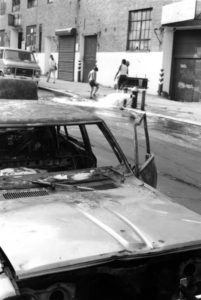
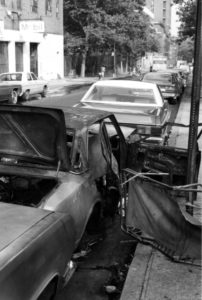
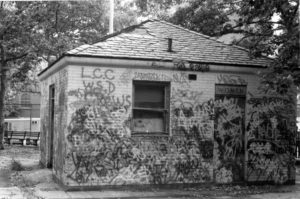

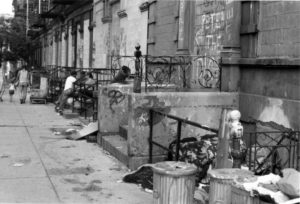
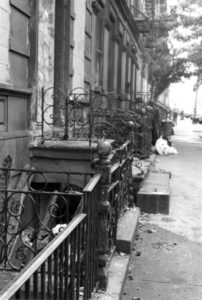
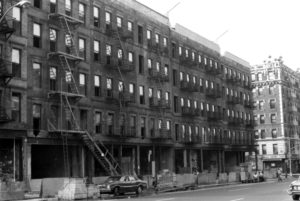
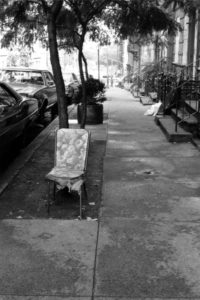

 I stopped the bike, pulled my phone out of my jersey, and dialed 911. As the phone connected, a white Dodge sedan with front end damage pulled across the intersection and parked next to where I was standing, headed the wrong way. At the same time, the injured man got to his feet and staggered across the intersection toward me, then collapsed at the curb. A woman went to comfort him. I told the 911 operator a car had hit a pedestrian, who was seriously injured. I stayed on the line for a few minutes until a fire engine pulled up. People were out of their cars, gathering around.
I stopped the bike, pulled my phone out of my jersey, and dialed 911. As the phone connected, a white Dodge sedan with front end damage pulled across the intersection and parked next to where I was standing, headed the wrong way. At the same time, the injured man got to his feet and staggered across the intersection toward me, then collapsed at the curb. A woman went to comfort him. I told the 911 operator a car had hit a pedestrian, who was seriously injured. I stayed on the line for a few minutes until a fire engine pulled up. People were out of their cars, gathering around. By this time, I’ve heard snippets of bystanders’ conversations, and I’m starting to put the pieces together. The injured man wasn’t a pedestrian, he was driving a motorcycle, which had smashed into the other side of the Volvo. But why?
By this time, I’ve heard snippets of bystanders’ conversations, and I’m starting to put the pieces together. The injured man wasn’t a pedestrian, he was driving a motorcycle, which had smashed into the other side of the Volvo. But why? As I rode back through the intersection, on my way home, the driver was putting the ambulance in gear. I stopped for a look at the motorcycle and then pedaled home.
As I rode back through the intersection, on my way home, the driver was putting the ambulance in gear. I stopped for a look at the motorcycle and then pedaled home.